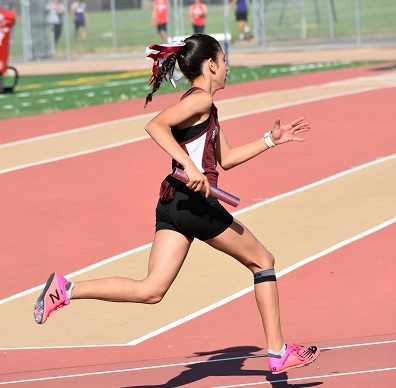Run Run Run......
And Do not Stop till the Finish Line
Introduction
Running can refer to any of a variety of speed ranging from jogging to sprinting. It is to move with the legs at a speed that is faster than walking.
It is assumed that the ancestors of humans developed the ability to run for long distance about 2.6 million years ago, in order to hunt for food.
“Running was never invented, as in, it wasn’t started or created by a person. It’s a natural ability that humans and animals have”.
Techniques in Running
- Block set-up
- Starting Phase
- Acceleration Phase
- Maximum velocity phase
Gears for Run
- Running Shoes
- Running Clothing
- Safety Gear
- Tech Gear
Rules in Running:-

- Sprinters should run in designated lanes and cannot cross lanes throughout the race.
- Sprinter should not step on white lines that mark their specific lanes.
- Sensors are places in the starting pistol and at the blocks. In case of a false start the athlete is disqualified.
- Before giving the set command or before firing the starter gun, athletes cannot touch the other side of the starting line with their hands or feet.
- Athletes should not obstruct other athletes during the race. If the athletes is obstructed, the referee may order the race to be held again.
- Athletes may leave the track voluntarily before the race ends, but they cannot come back to the track else they will be disqualified.
Tactics in Run
- The correct position to start a run is with the feet properly positioned in the foot braces.
- Point of Max: At this stage, all the energy is used up to pump your arms and quickly get your feet back to the ground in an intense stride.
- Maintaining the Speed: This is where all the sprinters start slowing down and the race gets interesting. Modulating the speed throughout the race is required to effectively increase the efficiency of the run.
Running Events: Types


1. Short distance or sprints: a sprint is a short distance race, usually carried out in ranges of 100m, 200m and 400m distances.
2. Middle Distance Runs: The middle distance races are the 800m and 1500 m and the 1 mile long runs. In this race, the runner rely more on endurance and pacing than just pure speed.
3. Long Distance: There are 3 main long distance races: 3000m, 5000m and 10000 m/10 Km runs. These also require much muscular endurance, pacing, speed modulations to complete the race.
4. Hurdles: A hurdle race is one in which obstacles are placed at intervals along the track that the runners must jump over on their way to the finish line. Typical hurdle races are the 100m, and 400m for women and 110m and 400 m for men.
5. Relays: Relay race are where teams of runners compete against each other. There are 4 members in a team and 4 legs to the race. Common relay races are 4 x 100m and 4 x 400m in distances. Each runner has to cover a 100 m distance and pass on the batton to the next runner of his team and so on.
6. Hurdles: A hurdle race is one in which obstacles are placed at intervals along the track that the runners must jump over on their way to the finish line. Typical hurdle races are the 100m, and 400m for women and 110m and 400 m for men.
Court Dimension/ Venue of Run
- Running tracks are wide oval shaped and divided into individual lanes. The track is measured in meters based on the distance of the innermost lane, which is called lane one.
- The proper length of the 1st lane of a competitive running track is 400 m, with two bends and two stretches of straight paths parallel to each other. The radii of both the bends are equal.
- The track comprises two semi-circles with a radius of 36.5 meters each.
Officiating Officials
Track and field athletics officials are:
Referees are responsible for judging various event within track and field. They can be sub-divided into four major groups:
field judges, track judges, time keeper and starter

